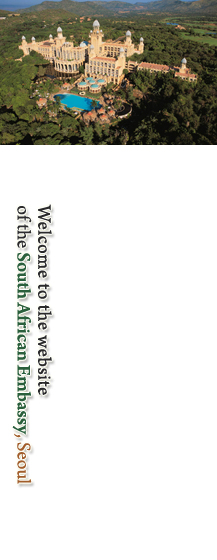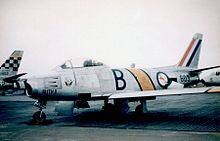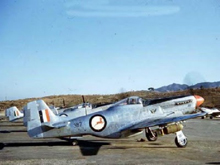
 |
 |
 |
 |
 |
 |
 |
 |
 |

| South Africa and the Korean War (1950-1953) |
|
 |
|
|
The Korean War broke out on 25 June 1950, when North Korean forces crossed the 38 th parallel and invaded South Korea. Calls for an immediate cessation of hostilities by an emergency session of the United Nations Security Council were ignored by North Korea and a resolution was subsequently adopted by the Council that “the members of the United Nations furnish such assistance to the Republic of Korea as may be necessary to repel the armed attack and to restore international peace and security in the area”.
As a founder member of the United Nations, the South African Government on 4 August 1950 announced the decision to support the UN appeal by placing a South African Air Force (SAAF) fighter squadron with ground personnel at the disposal of the UN. As members of the South African Permanent Force were only liable for service inside South Africa at the time, the service in Korea took place on a voluntary basis.
On 26 September 1950, 49 officers and 206 other ranks from the SAAF’s No. 2 Squadron, the so-called "Flying Cheetahs", left Durban for Yokohama in Japan prior to their deployment in Korea. Operating F-51D Mustangs and later F-86F Sabres and attached to the US Air Force’s 18 th Fighter Bomber Wing, 2 Squadron’s role consisted of flying ground attack and later also high-level interdiction missions.
At the end of the war, which was signaled by the signing of the cease-fire agreement at Panmunjeom on 27 July 1953, 2 Squadron had flown a total of 12 067 sorties during which 74 out of their 97 Mustangs and four out of their 22 Sabres were lost.
According to the UN Korean War Allied Association, a total number of 826 South Africans served during the War: 243 Air Force officers, 545 ground personnel and 38 army officers and men, the latter serving as part of the 1 st Commonwealth Division.
A total of 37 South Africans paid the ultimate price during the War. Of these, 11 are interred at the United Nations Memorial Cemetery in Korea (UNMCK) in Busan.
Following the war, South Africa - as one of the 16 United Nations Command (UNC) Sending States who contributed combat units to the UN forces - joined the United Nations Command (UNC), the United Nations Command Armistice Commission (UNCMAC) and the United Nations' Memorial Cemetery in Korea (UNMCK).
During the apartheid era, South Africa’s membership of these bodies was suspended.
In 2010, South Africa was reinstated as a member of the UNC and since then, the South African Embassy in Seoul participates fully in the activities of the UNC and UNCMAC.

